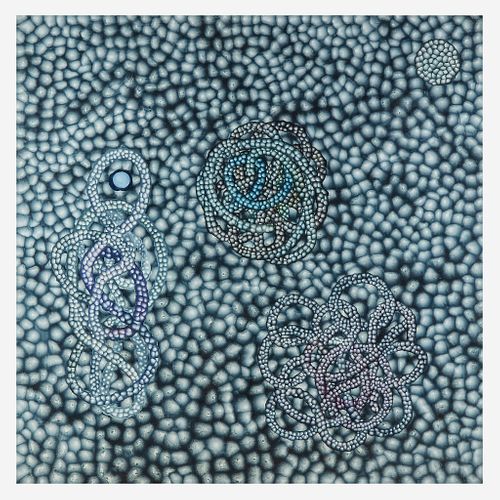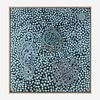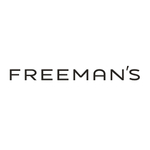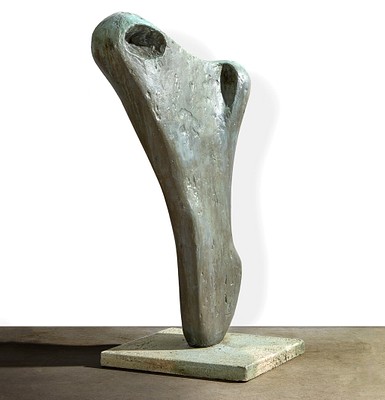Ross Bleckner (American, b. 1949) Bonds and Proteins
About Seller
2400 Market St
Philadelphia, PA 19147
United States
Established in 1805, Freeman’s Auction House holds tradition close, with a progressive mind-set towards marketing and promotion, along with access to a team of top experts in the auction business. And now with offices in New England, the Southeast, and on the West Coast, it has never been easier to ...Read more
Two ways to bid:
- Leave a max absentee bid and the platform will bid on your behalf up to your maximum bid during the live auction.
- Bid live during the auction and your bids will be submitted real-time to the auctioneer.
Bid Increments
| Price | Bid Increment |
|---|---|
| $0 | $25 |
| $500 | $50 |
| $1,000 | $100 |
| $2,000 | $200 |
| $3,000 | $250 |
| $5,000 | $500 |
| $10,000 | $1,000 |
| $20,000 | $2,000 |
| $30,000 | $2,500 |
| $50,000 | $5,000 |
| $100,000 | $10,000 |
About Auction
May 11, 2021
A collection of Modern and Contemporary art including an etching from William Kentridge's Sleeper Series. Curated by David Weiss, Senior Vice President and Head of Sale for the Modern and Contemporary Art department at Freeman's. Freeman's info@freemansauction.com
- Lot Description
Ross Bleckner (American, b. 1949) Bonds and Proteins
Signed, dated 1999 and titled verso, oil on linen.
(60 x 60 in. (152.4 x 152.4cm))Provenance
Lehmann Maupin Gallery, New York, New York.
Private Collection, United Kingdom.
Footnote:Note
Contemporary painter Ross Bleckner gained prominence during the 1980s AIDS crisis with work that sought to visualize or quantify the human toll and heartbreaking loss of the pandemic. Large-scale works such as 8,122+ as of January 1986 presented richly painted funereal imagery, while literally accounting for the number of deaths from AIDS at the time of its creation. Other images of birds, flowers, or light emerging from darkness honored and memorialized Bleckner’s fellow artists and friends during the crisis.
In the late 1990s, Bleckner worked to visualize disease in another way, based on scientific images his father found while researching his own prostate cancer. Again, a deeply emotionally connected event for Bleckner, the cancer seemed surprisingly “beautiful” to him, mysterious in the way it grew and multiplied and yet created sickness and pain, and eventually death for his father. The artist said: “...the kind of intersection between us being people with consciousness and awareness, and us being vectors for virus. That always has fascinated me.” [1] The present painting, Bonds and Proteins serves as an important example from this period, exemplifying Bleckner’s cell motif, his notion of the “overexpression” of cells that become cancer.
Bleckner grew up in New York City and Long Island and saw his first exhibition as a teen - The Responsive Eye at the Museum of Modern Art, New York - an Op Art exhibition which sparked his imagination and fueled his interest in pursuing a career as an artist. He attended New York University and studied under artists Sol LeWitt and Chuck Close, before heading to California for graduate school at California Institute of the Arts. Bleckner returned to New York in 1974 and bought a loft in Tribeca that became home to fellow artist Julian Schnabel, as well as the popular Mudd Club nightclub. Cunningham Ward Gallery presented the artist’s first solo exhibition in 1975. His work then caught the attention of Mary Boone, whose gallery represented Bleckner for nearly three decades. He was the subject of a mid-career retrospective at the Guggenheim Museum at the age of 45, the youngest artist at the time to receive a major museum retrospective exhibition.
Building off of early experimentation with Op Art motifs, Bleckner was one of the pioneers of the kind of all-over abstraction typical of 1990s painting. In his 1999 Bonds and Proteins, cells bind together in a dense, organic structure, with individual chains intertwining, floating, and mutating toward the viewer, as if under a microscope. He created the cell structures using an airbrush to blow the paint on the canvas “to create these pools of cells that blob onto each other and connect and disconnect, and mutate...to be that organic process.” [2] While work throughout his career has often involved a means of destruction - using a blowtorch to the canvas or wiping away paint to smear the image - this painting instead speaks to accumulation, growth, and the building up of communities of forms, a mark-making that covers the surface completely. Bonds and Proteins provides a timely examination into the nature of disease, its seeming abstraction, and yet the very tangible ways it affects our lives.
[1] Linda Yablonsky, “Oral history interview with Ross Bleckner,” July 6-8, 2016, Archives of American Art, Smithsonian Institution, https://www.aaa.si.edu/collections/interviews/oral-history-interview-ross-bleckner-17359, PDF download p. 87.[2] Yablonsky, p.88.
- Shipping Info
-
No lot may be removed from Freeman’s premises until the buyer has paid in full the purchase price therefor including Buyer’s Premium or has satisfied such terms that Freeman’s, in its sole discretion, shall require. Subject to the foregoing, all Property shall be paid for and removed by the buyer at his/ her expense within ten (10) days of sale and, if not so removed, may be sold by Freeman’s, or sent by Freeman’s to a third-party storage facility, at the sole risk and charge of the buyer(s), and Freeman’s may prohibit the buyer from participating, directly or indirectly, as a bidder or buyer in any future sale or sales. In addition to other remedies available to Freeman’s by law, Freeman’s reserves the right to impose a late charge of 1.5% per month of the total purchase price on any balance remaining ten (10) days after the day of sale. If Property is not removed by the buyer within ten (10) days, a handling charge of 2% of the total purchase price per month from the tenth day after the sale until removal by the buyer shall be payable to Freeman’s by the buyer. Freeman’s will not be responsible for any loss, damage, theft, or otherwise responsible for any goods left in Freeman’s possession after ten (10) days. If the foregoing conditions or any applicable provisions of law are not complied with, in addition to other remedies available to Freeman’s and the Consignor (including without limitation the right to hold the buyer(s) liable for the bid price) Freeman’s, at its option, may either cancel the sale, retaining as liquidated damages all payments made by the buyer(s), or resell the property. In such event, the buyer(s) shall remain liable for any deficiency in the original purchase price and will also be responsible for all costs, including warehousing, the expense of the ultimate sale, and Freeman’s commission at its regular rates together with all related and incidental charges, including legal fees. Payment is a precondition to removal. Payment shall be by cash, certified check or similar bank draft, or any other method approved by Freeman’s. Checks will not be deemed to constitute payment until cleared. Any exceptions must be made upon Freeman’s written approval of credit prior to sale. In addition, a defaulting buyer will be deemed to have granted and assigned to Freeman’s, a continuing security interest of first priority in any property or money of, or owing to such buyer in Freeman’s possession, and Freeman’s may retain and apply such property or money as collateral security for the obligations due to Freeman’s. Freeman’s shall have all of the rights accorded a secured party under the Pennsylvania Uniform Commercial Code.
-
- Buyer's Premium



 EUR
EUR CAD
CAD AUD
AUD GBP
GBP MXN
MXN HKD
HKD CNY
CNY MYR
MYR SEK
SEK SGD
SGD CHF
CHF THB
THB












